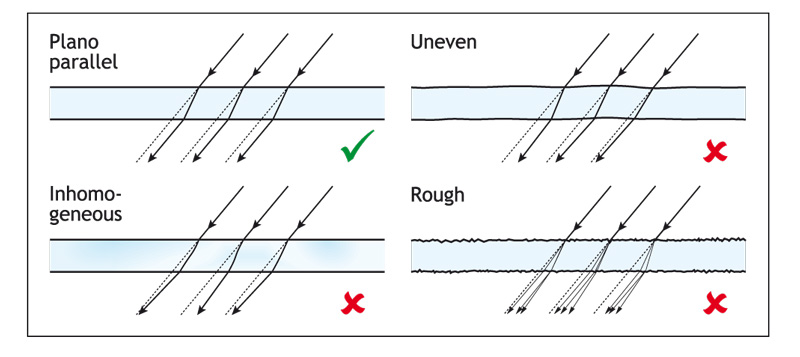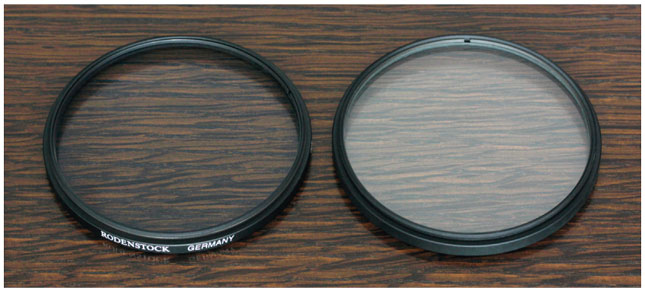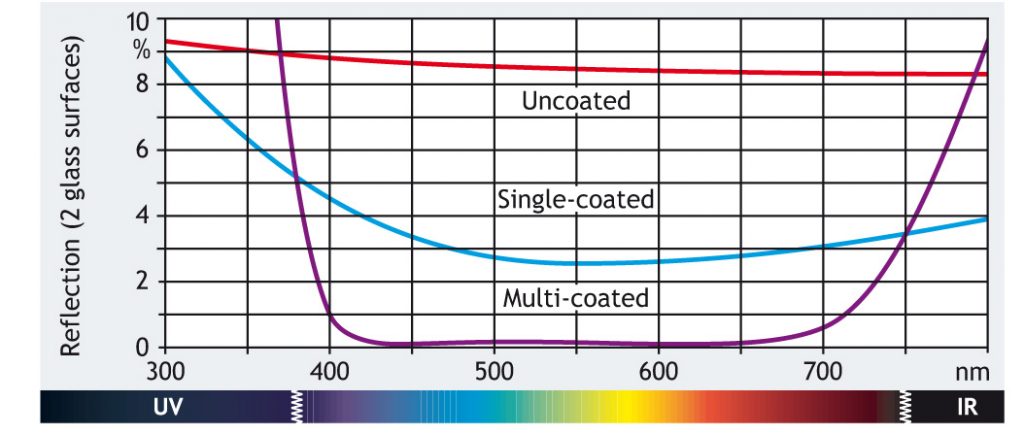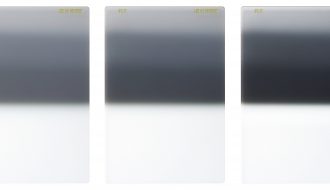Modern taking lenses produce sharp, high-contrast, true-color and distortion-free photographs. However, if ambient light is too bright for a low depth of field (e.g. for a high aperture) or for intentional motion blur (e.g. for a slow shutter speed), not even the best lens can help. It is no different if UV radiation falsifies colors and reduces contrast or if shiny surfaces produce irritating reflections. Or if colors are not converted into gray values in black and white images, on film or digitally, as the photographer actually wanted. Only filters can solve this problem.
However, the quality differences are huge
If you have spent a lot of money for a good lens, you do not want to run the risk of image quality losses due to inferior filters. For the filter is just as much a part of the optical beam path as the lens elements.
This Rodenstock filters overview explains the benefits of owning such a filter.
Optical glass and perfect surface
Light rays must remain parallel after passing through the filter, to prevent the possibility of blur and loss of contrast, the direction of outgoing light must remain exactly parallel to that of incoming light at all points. All Rodenstock filters therefore have a very flat slimline frame. In order to allow a screw thread for fastening a lens hood or a protective cap, the glass is only 1.4mm thick.

Filter Frames
The best material for filter frames is brass because it offers the best sliding properties when being screwed on or unscrewed as well as high mechanical strength. The frames of the Rodenstock filters Digital Vario ND are made of the somewhat lighter aluminum because these filter lines were designed for the best possible price/performance ratio.
The edges of all Rodenstock filter lenses are blackened so that no contrast-reducing reflections are caused there. Together with the excellent coating, this produces the best possible image contrast.
 Filter Coatings
Filter Coatings
Although optical glass does not transmit 100% of light despite its high transmission, absorption does not play any role as filter glassplates are very thin. However, a smaller portion of light is reflected at any interface between air and glass. This reflected light reduces the useful brightness and can reduce contrast as scattered light if reflected a multiple of times. The reflection can be reduced for both sides of the filter glass together to around 2.5% for the medium range of the spectrum, with a slight rise to both sides, by vapor deposition of an exactly calculated, incredibly thin layer of a dielectric material of suitable refractive index, e.g. magnesium fluoride MgF2. A multilayer coating (MC = multi-coating) of several dielectric layers of calculated thicknesses and refractive indices reflects even less.

On the left, a Rodenstock filter HR Digital UV with a highly efficient super MC coating; on the right a non-coated UV blocking filter. The left hand filter with only 0.2% reflection practically no longer shows any mirror effect.

Rodenstock filters also have a water and dirt repellent coating; dirt on the front lens element or on a screwed on filter reduces the contrast. Fingerprints and water droplets have a soft-focus effect. Careful cleaning is therefore required regularly for good sharpness. A high-quality, scratch resistant UV blocking filter is recommended since a scratched front lens element can make the lens, which is expensive in comparison with the filter, impossible to use. Apart from clear view with less bluish haze and improved sharpness, it has no visible effect on the image and can therefore remain on the lens at all times. The coating of all Rodenstock filters is more scratch-resistant than the hard glass. The filters of the HR Digital line with “super MC” have a further coating on top of the MC coating which is even harder and has an additional beneficial property: It is repellent to water and oil. This means that water does not wet the glass, but rather forms pearl-like drops as on the lotus blossom famous for this effect.

As you can see, on the right, the water forms spheres and rolls off, whereas on the right the water stays on the filter glass.

